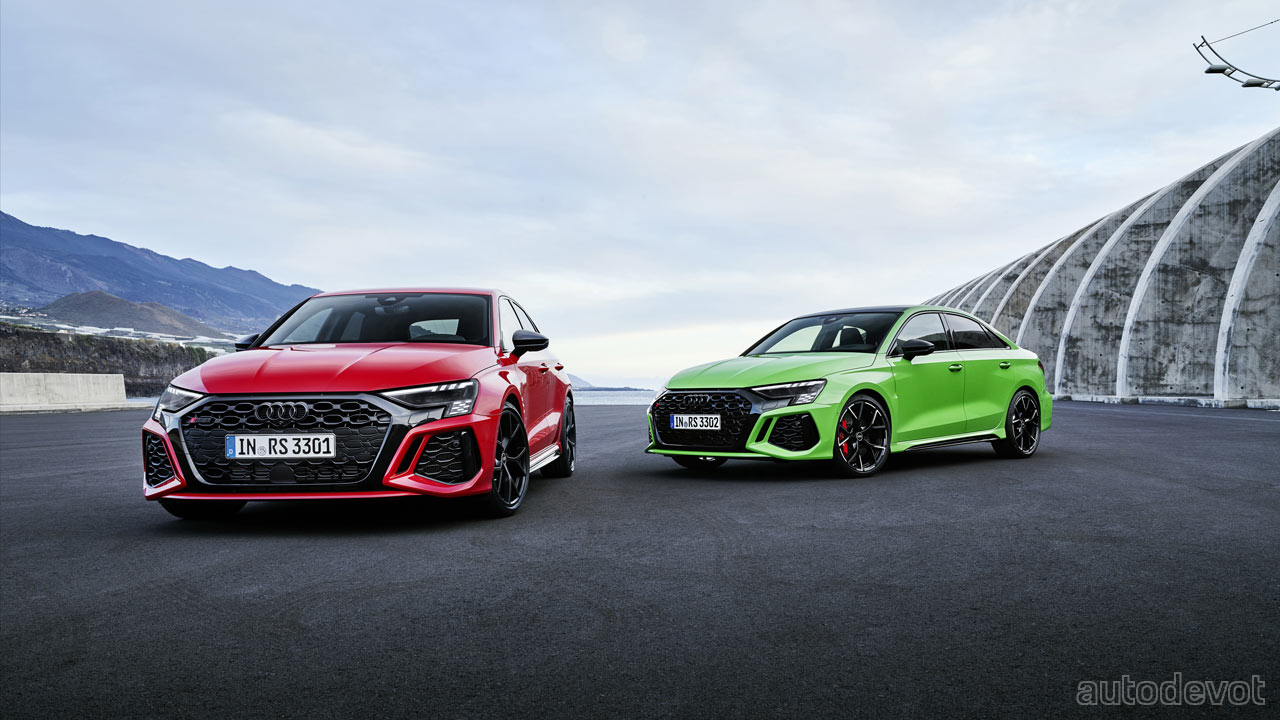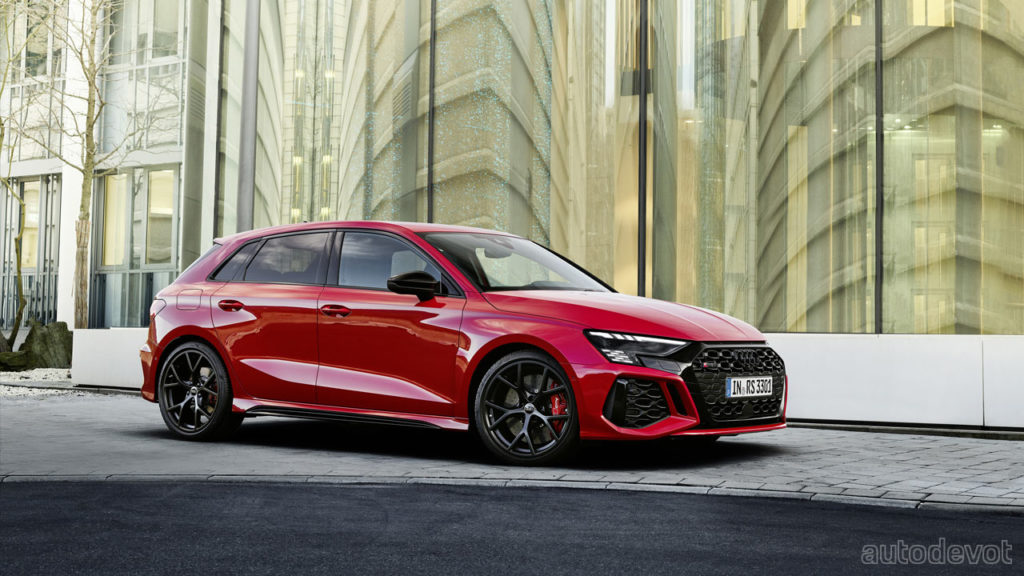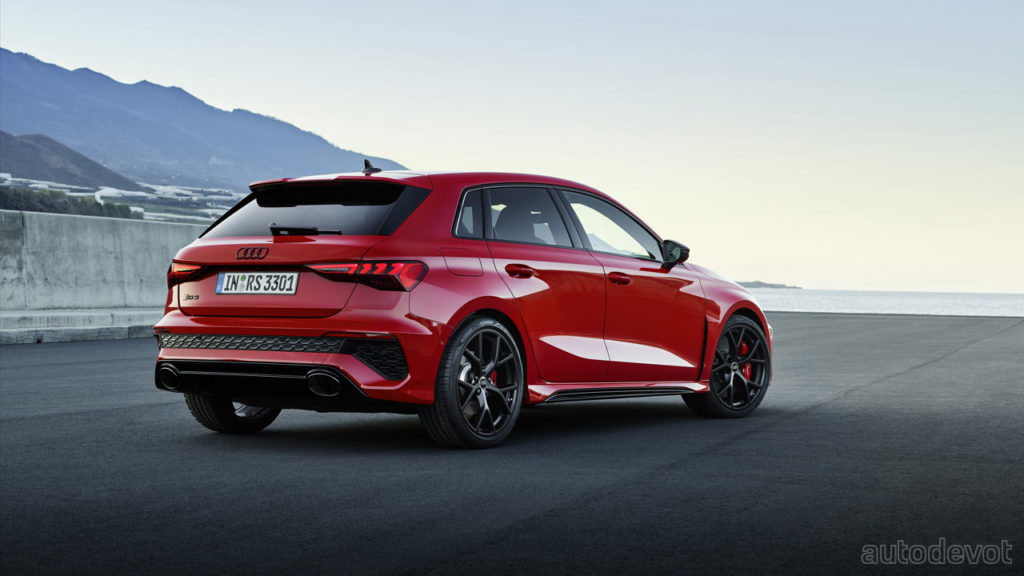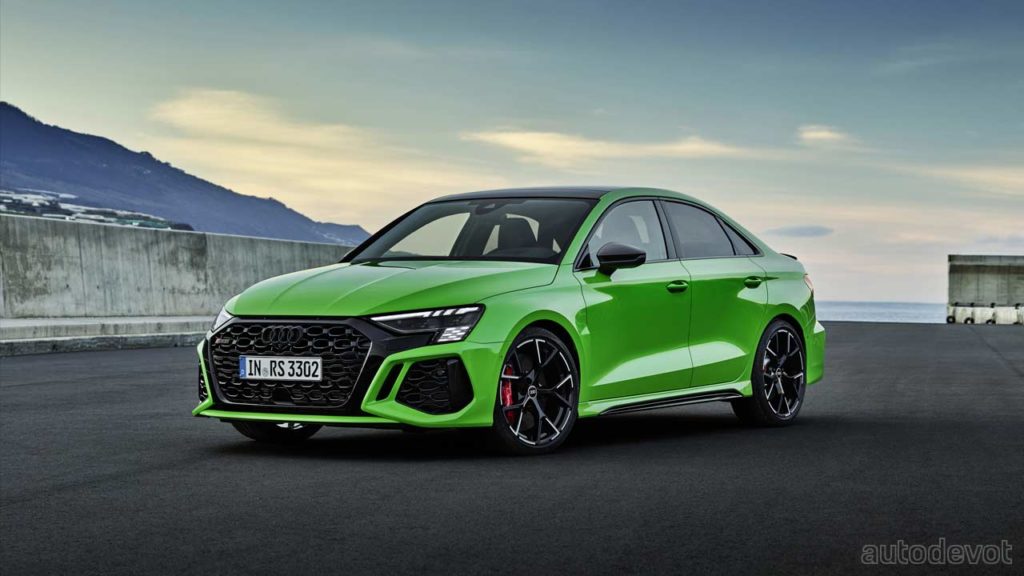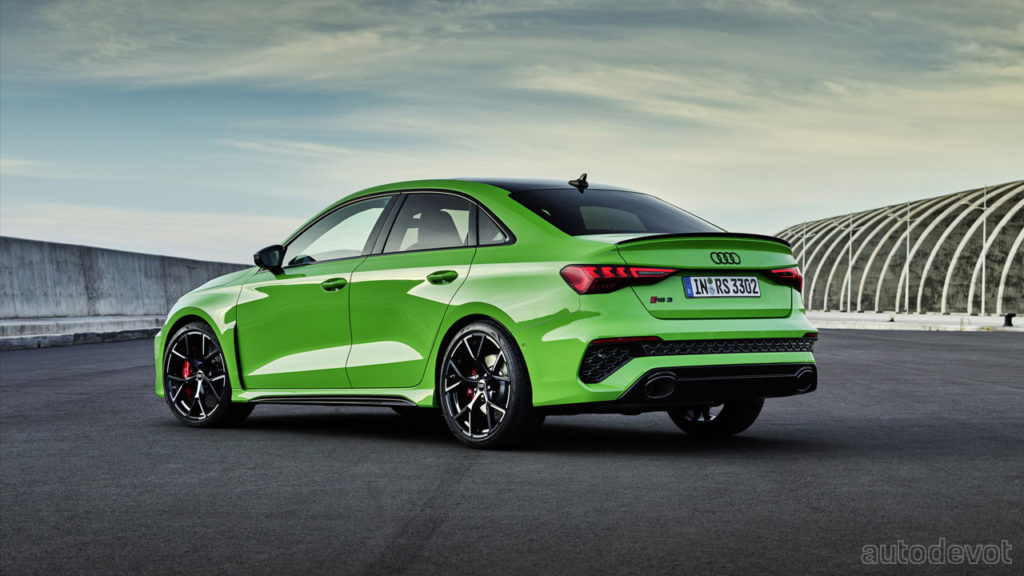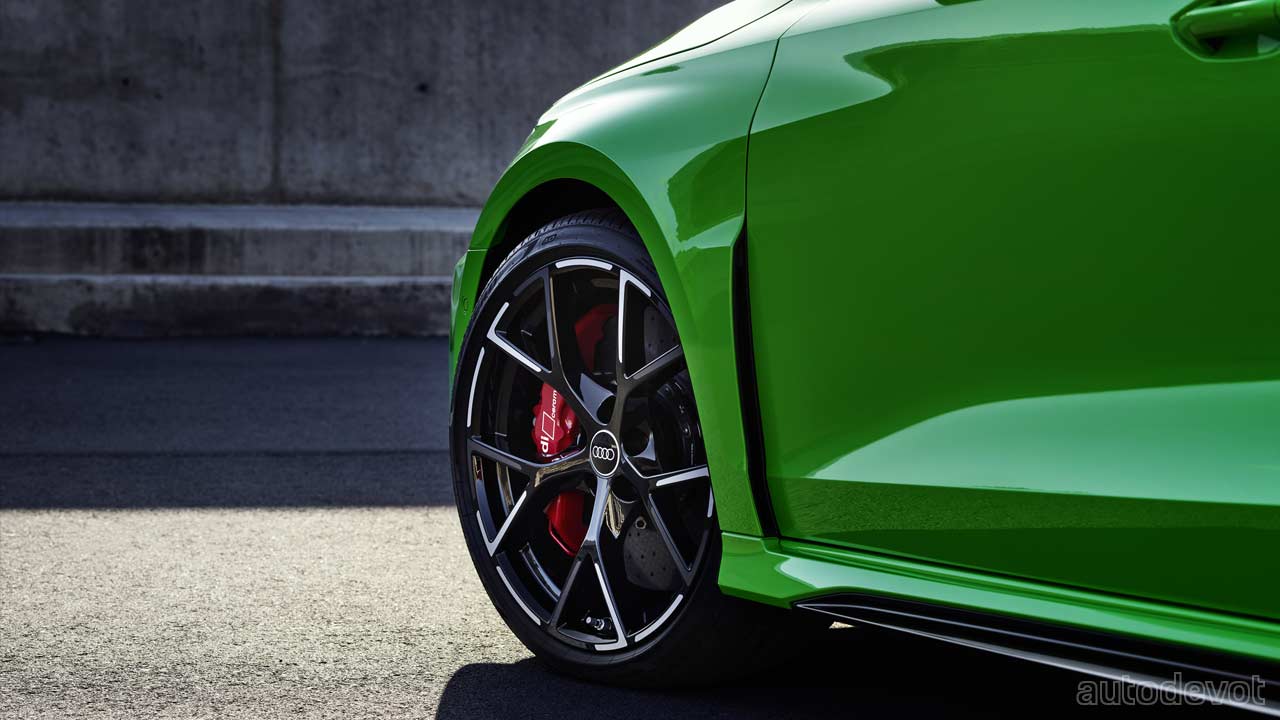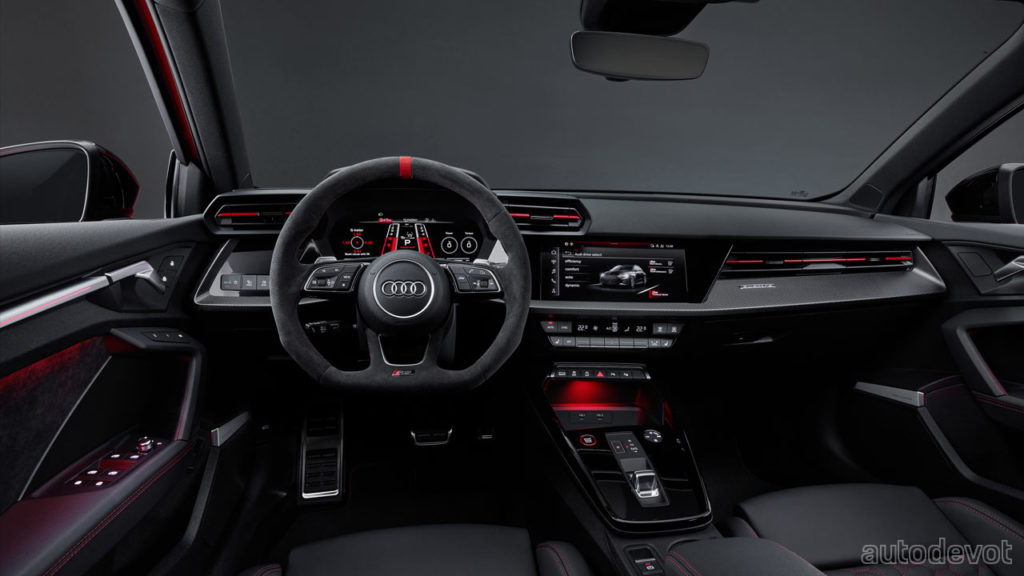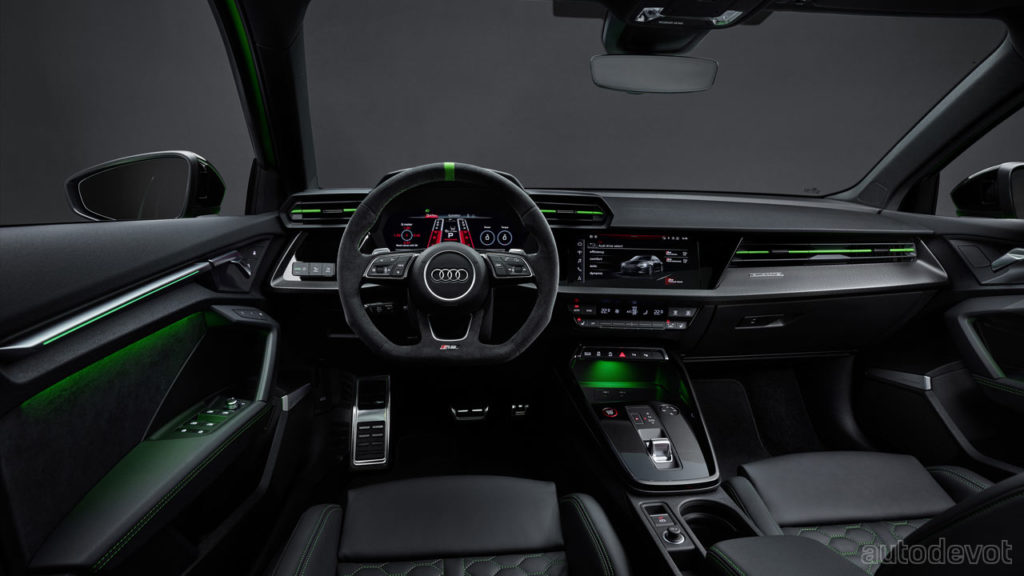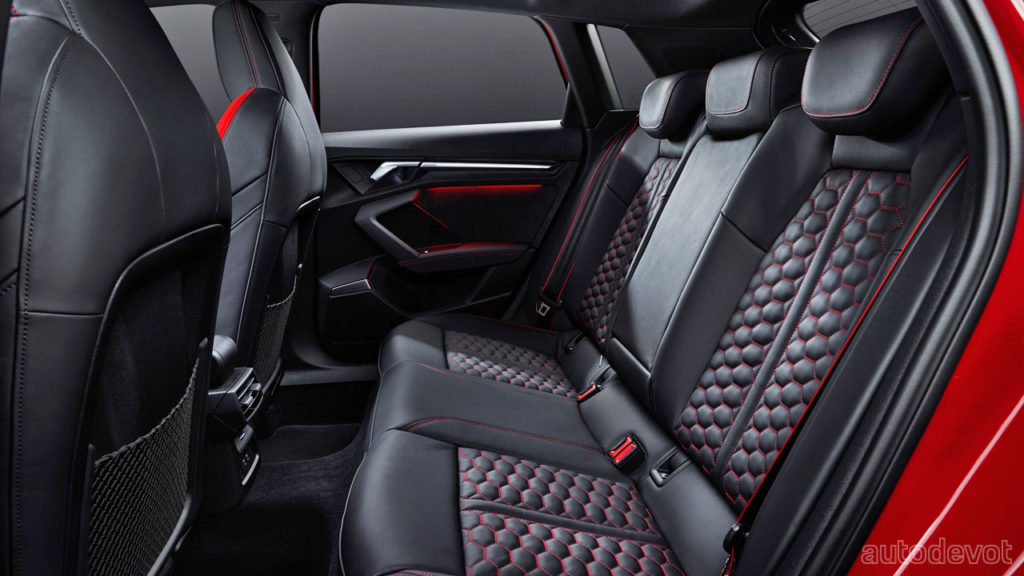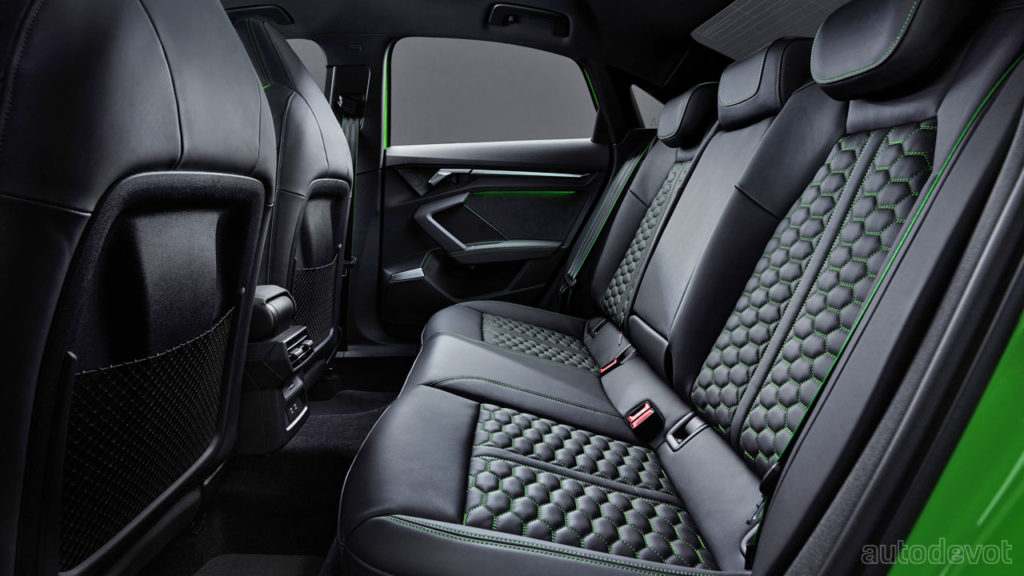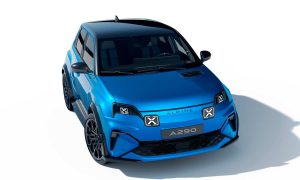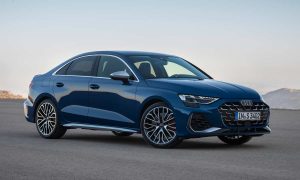Audi has taken the camouflage off the third-generation RS 3 models (first-gen A3 didn’t have RS 3 variants) which include the Sportback and the Sedan. Both cars will go on sale in European markets this fall, with prices starting at €60,000 for the RS 3 Sportback and €62,000 for the RS 3 Sedan.
Let’s talk a li’l bit about the styling, because both cars look menacing AF (or “sick!”, if you prefer) especially in these paint finishes. Speaking of which, the Sedan is finished in ‘Kyalami Green’ while the Sportback on the other side is drenched in ‘Tango Red’. But what makes them look stunning are those contrasting black elements, especially at the front. The optional Matrix LED headlights also feature dark bezels. Notice the checkered flag pattern on the running lights for some extra drama. Full photo gallery here.
Those wheels look stunning too, aren’t they? As standard, the cars ride on 19-inch cast wheels in a 10-Y-spoke design. The ones featured above are the optional 5-Y-spokes. For the first time, Pirelli P Zero Trofeo R semi-slick tires are available in the options list. Buyers can also go for the ceramic brake system that is claimed to be 10 kg (22 lbs) lighter than the standard steel brakes.
As you can tell from the photos, the cars are wider. The front track, for example, is 33 mm wider compared to the previous model. Speaking of the front axle, the negative camber has been increased by another degree, and to achieve this, the pivot bearings were modified and the lower wishbones were equipped with stiffer bearings, subframes, and stabilizers. The rear axle features a four-link design with separate spring/damper arrangement, subframe, and tubular stabilizer bar. The wheel carriers are stiffer than those of the A3 and S3 to absorb the increased lateral forces generated by the torque splitter. The negative camber here is almost half a degree more compared to the A3.
While the RS sports suspension comes standard, buyers can go for the optional RS sport suspension plus with adaptive damper control. The cars ride 10 mm lower than the S3 and 25 mm lower than the A3.
The cabin has been spiced up with matching contrast highlights depending on the exterior paint; a flat-bottom RS Sport leather steering wheel with a 12 o’clock stripe; an integrated RS Mode button on the steering wheel; carbon fibre inserts on the dashboard; RS sport seats, and of course, model-specific graphics on the displays.
The RS‑specific progressive steering varies the gear ratio depending on the steering angle — as the steering angle increases, the gear ratio becomes smaller and steering more direct.
Both cars are powered by a 2.5-litre in-line 5-cylinder TFSI engine that pumps out 294 kW (400 metric hp) between 5,600 and 7,000 rpm and 500 Nm (369 lb-ft) of torque between 2,250 and 5,600 rpm. While the horsepower remains the same, the torque is up by 20 Nm. Transmission continues to be a 7-speed DCT, but now with short shifting times and a sportier gear ratio spread. Audi claims a 0-100 km/h (62 mph) sprint time of 3.8 seconds for both models. The limited top speed of 250 km/h (155 mph) can be upgraded to 290 km/h (180 mph) for extra money. The standard exhaust system features a variable flap control system, however, an optional RS sports exhaust system is also available for those who want to spend even more money.
Both RS models feature the RS torque splitter on the rear axle. Read more about it in detail here.

Leave a Reply
Note: Comments that are unrelated to the post above get automatically filtered into the trash bin.
